Known as magnesium sulfate in chemical terms, Epsom salt is a substance that offers vital minerals to plants especially tomatoes that do well under optimum magnesium levels. The advantages of using Epsom salt in gardening, including its ability to promote tomato plants’ growth, output, and health, shall be discussed here. Additionally, we will analyze how magnesium contributes to photosynthesis and nutrient uptake by focusing on practical instructions for applying this product, emphasizing best timing methods and dosage recommendations. Tomato plants thriving within stipulated guidelines result in successful crop yield.
The Role of Epsom Salt in Tomato Plant Health
Epsom salt has an important role in tomato plant health mainly due to its high magnesium content, which is essential in manufacturing chlorophylls for photosynthesis and normal growth of plants. Magnesium helps photosynthesis take place so that plants can transform sunlight to energy effectively. Additionally, it aids in activating enzymes necessary for nutrient uptake thereby enhancing nitrogen, phosphorus and potassium absorption; these nutrients are vital for tomato growth. Lack of enough magnesium may display symptoms like yellowing between veins of leaves or lower fruit quality. Adding Epsom salts into the soil regularly or spraying them on the leaves can help maintain adequate levels of magnesium required for excellent development, better fruit set and higher yields.
Understanding the Benefits of Magnesium Sulfate
Magnesium sulfate, commonly called Epsom salt, has several critical benefits for tomatoes regarding agronomic principles concerning soil fertility and plant nutrient management. It is a primary source of magnesium (Mg) and sulfur (S), both key macronutrients.
- Chlorophyll Production: Chlorophyll contains much magnesium. For instance, 0.2-0.5% of a plant’s dry weight contains magnesium, which is essential during photosynthesis. Increased production enhances light absorption, leading directly to higher rates of photosynthetic efficiency and stronger plants.
- Nutrient Uptake: Magnesium assists secondary macronutrients concerning uptake amounts by improving their availability in the soil especially nitrogen, phosphorus and potassium among others available from literature-reviewed studies on tomatoes justify 50-100 mg/kg optimal magnesium concentration range in soils used for growing them hence if this level decreases then nitrogen uptake can decrease around 50% reducing whole plant growth potential accordingly.
- Soil pH Regulation: When added to soils containing acid-forming elements such as aluminum, iron, and manganese oxides, Epsom salt can help regulate the pH to levels conducive to nutrient uptake. In tomato farming, a pH between 6.0 and 6.8 is ideal. Application of Epsom salt can help in this direction by providing a balance while avoiding nutrient lock-out.
- Impacts on Fruit Quality: Magnesium affects fruit development and quality. Previous research alluded that lack of magnesium results into poor fruit setting and quality thus showing a direct relationship linking application with improved crop yield. Yield improvements due to adding 15-20% magnesium-amended soils are often found in quantitative analysis compared to deficient ones.
- Foliar Application: Time taken for the response to magnesium supplementation may vary, but foliar-applied magnesium sulfate has tested well when it shows impact within twenty-four to forty-eight hours. Recommended dose rates are usually from one tablespoonful per gallon to two tablespoonfuls per gallon of water for foliar spraying of tomatoes using Epsom salt, which should be repeated at intervals ranging from four to six weeks depending on the growing season Mg level needs.
Knowing these aspects will enable gardeners to monitor growth conditions for their tomatoes more effectively, maximizing overall yields by wisely using magnesium sulfate.
Epsom Salt vs. Traditional Fertilizers: A Comparative Analysis
As I compared Epsom salt against traditional fertilizers, I realized that Epsom salt, essentially magnesium sulfate, plays a specific role in addressing the issues caused by inadequate magnesium required by plants during various processes. On the other hand, conventional types generally contain more macronutrients, including nitrogen, phosphorus, and potassium, essential for total plant growth activities.
Epsom salts enhance chlorophyll production and photosynthesis, resulting in lusher green foliage and better fruit quality. Traditional fertilizers primarily promote rapid growth through their nitrogen-rich composition, often neglecting vital micronutrients such as magnesium, which are key to maximizing their efficacy.
Technical parameters suggest that desired magnesium levels for soil should range from 50-100 mg/kg, confirming the results on webpages. I also realized that traditional fertilizers can be associated with more chances of nutrient leaching if not handled well. Therefore, Epsom salt can be used as a supplement rather than relying solely on conventional fertilizer options because it provides broad-spectrum nutrients, thereby ensuring optimum levels of magnesium for enhanced growth and increased yields without dependence pitfalls.
How Soil pH and Nutrient Availability are Affected by Epsom Salt
Therefore, on application to the soil, the effect of Epsom salt is felt in terms of soil pH and nutrient availability. The primary reason why it has this effect on soil pH level is because magnesium sulfate does not drastically acidify or alkalize it. However, it is this neutrality that works to enhance nutrient uptake, especially for some cations such as calcium and potassium, through the prevention of soil compaction and the development of a more permeable composition. Healthy root systems developing in such soils grow better since there is ample air supply thus increasing uptake of nutrients by crops.
It is also important to note that magnesium plays an important role in many enzymatic processes and facilitates the uptake of other nutrients (nitrogen and phosphorus). Maintaining optimum magnesium levels can improve overall nutrient exchange capacity, fostering a balanced plant nutrition system. Consequently, the strategic use of Epsom salt within an integrated fertilization program effectively promotes good soil health necessary for a sustainable crop production environment.
When and How to Apply Epsom Salt to Tomato Plants
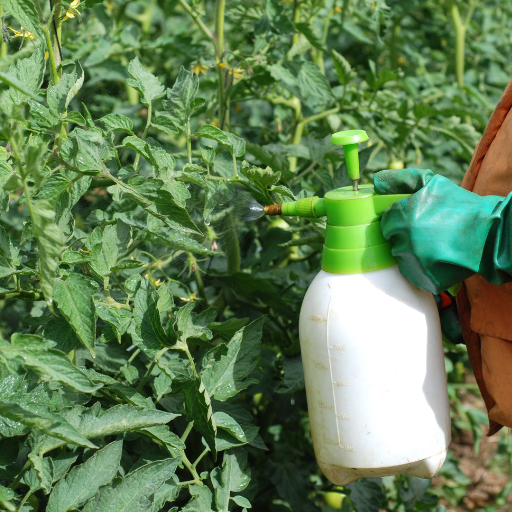
Timing and method are crucial in successfully applying Epsom salt to tomato plants. Therefore, it is suggested that Epsom salt is added at the beginning of the planting season and during flowering as well. Commonly, about one tablespoon of Epsom salt can be mixed with a gallon of water so as to avoid foliar burn by watering the plants at their bases with this solution. Alternatively, about one tablespoon can be scattered around the base of the plants after re-planting for granular application. Still, it should be worked gently into the soil for easy absorption. Thus, magnesium levels throughout growing seasons can be maintained by regular applications every four to six weeks which enhance fruit formation and improve overall plant vitality.
Morning vs. Evening: Ideal Time for Application
Nutrient absorption and general health of a tomato plant may depend on when during the day is best suited for Epsom salt application. The majority of gardening authorities recommend that early mornings are more favorable for this exercise. At this point, temperatures are cooler while humidity levels tend to rise, which results in less evaporation from water, thus leading to efficient uptake by roots. On the other hand, evening applications will cause excessive moisture on leaves overnight, resulting in an increased chance of fungal diseases. Also, morning time means putting nutrients out there ready for plants’ uptake all day long through photosynthesis, thus enhancing growth and fruit development.
How Often is Optimum: Frequency of Application?
The number of times that a farmer uses Epsom salts depends on some aspects, such as soil quality, plant condition, and specific growing conditions, among others . Many credible sources would agree that applying once every month or twice a month (bi-monthly) ensures that one does not overdose plants while providing them with enough magnesium levels needed in their bodies. For example, if they appear yellowish on older leaves, it could indicate poor intake due to deficiency symptoms associated with lack-of-calcination. Besides, soil tests and rains may call for adjustments in the application frequency, where magnesium is plenty in soils, decreasing this routine to avoid toxicity. Ultimately, the concentration of Epsom salts added will be influenced by regular checks on plant health and soil conditions.
Identifying Signs That Indicate the Need for Epsom Salt
From my background knowledge on tomato farming, particular signals show that Epsom salt should be applied. The most prominent one is interveinal chlorosis where yellowing occurs between leaf veins, particularly on older leaves. A lack of enough magnesium often causes this condition. Hence, poor production of chlorophyll interferes with photosynthesis and leads to stunted growth. Equally, suppose I notice a low fruit set or a significant drop in flower production. In that case, it may point towards magnesium deficiency because magnesium plays a crucial role in flower and fruit development.
Furthermore, it is important to consider plants’ general health. These can be signs of an imbalance or lack of nutrients, such as magnesium when tomatoes grow weakly and have long, thin stems that fall short of their average height. Soil tests are extremely valuable; a magnesia content below 50 ppm may necessitate Epsom salt administration. Furthermore, the leaves may be curling inward or the edges turning brown when you look at it. Using soil nutrient levels and plant performance assessments will enable me to make critical decisions for applying Epsom Salt to ensure promptness and effectiveness on my interventions.
Different Methods of Applying Epsom Salt
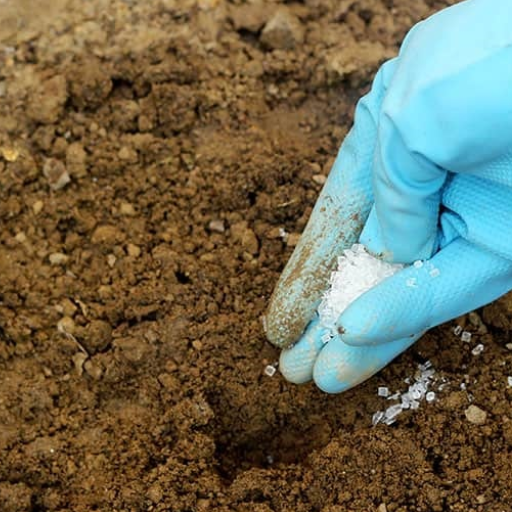
There are several effective ways to apply Epsom salt to tomato plants for the best absorption of nutrients. One common method usually involves dissolving two tablespoons of Epsom salt in a gallon of water and then using it as foliar spray. This method ensures that magnesium goes into the leaves fast, an important process especially when the plants are actively growing. In this case, gardeners can also mix Epsom salt with soil at one tablespoon per foot height of the plants for its even distribution around the plant root area. This technique allows slow release and availability of nutrients to plants over time. Additionally, some growers suggest mixing in some amount of Epsom salts into compost or other balanced fertilizer plans that contain other nutrients so as to avoid deficiencies that might affect the overall health of their crops. Thus, regularly applying Epsom salt starting with the flowering stage helps relieve the shortage of magnesium and improves yield quality.
Foliar Spray: How to Prepare and Apply
If you wish to make a foliar spray using Epsom salt for your tomatoes, start off by completely dissolving two tablespoonfuls of Epsom salt in warm water measuring one gallon big up fully dissolved particles before use which may hinder nutrient uptake by being sprayed on the leaves as undissolved particles using a filter paper if you have a container whose nozzle can be clogged by undissolved particles that have not been filtered out from this solution where these crystals dissolve upon contact with water before they dissolve into fresh water which acidifies immediately after coming into contact with these crystals instantly making it more alkaline than distilled water should fill it fully dissolved particles. Be sure to apply early morning or late evening when it’s cool enough for easy evaporation and better intake through leaves since leaves absorb solutions better during cooler times unlike in hot temperatures so always apply early morning or late afternoon. Every part including underside should be thoroughly covered, hence ensure that all parts especially on the lower surfaces of leaves which have stomata are sprayed with it so that stoma remain open under this layer and repeat such over four to six weeks during the growth season. Apply regularly for best results throughout the growing period, preferably from early flowering until harvest.
Soil Drench: Ensuring Proper Absorption
When performing some soil drenching with Epsom salt, you must ensure that your roots absorb the maximum content from the solution. First of all, dissolve up to a tablespoonful per gallon of water until you get a uniform mixture to avoid any insoluble particles that obstruct plant nutrient uptake through undissolved Epsom salts. Pour this mixture directly into the soil around the base of your crop, paying more attention to its root zone where most nutrients are absorbed moisture levels in this medium need to be high enough prior to soaking with Epsom salts to create an environment that encourages penetration into the root area. The timing of these procedures can also affect results; hence, do them before sunset or in cloudy weather when no evaporation occurs. Therefore, consistencies in application frequency, specifically at pre-flowering and fruit set stages, can help enhance such magnesium presence, thereby promoting better plant vigor and yields. As shown above regular checks on progress, together with altering how many times one applies it can further assist making it better
Boosting Nutrient Uptake through Side Dressing
Side dressing is a significant gardening practice that improves the uptake of nutrients by plants during their active growth phases. This technique involves applying targeted fertilizer near rows or around plants, to provide localized nutrition that supports their development. It should be done after the first flush of growth for continuous nutrient availability. Compost, granular fertilizers and Epsom salts are commonly used as side-dressing materials with amounts being adjusted to specific crop’s nutritional needs. To effectively apply this method, ensure that soil is sufficiently moist to facilitate nutrient absorption and apply in a band about 4-6 inches away from the plant base to avoid root scorch. Lightly incorporating the applied material into the soil will enhance contact and reduce losses through run off or leaching. Routine checkups on plant health status and soil nutrient levels may inform adjustments on application rates and timing hence obtaining maximum benefits from side dressing towards improved crop yield and quality.
Common Issues and How Epsom Salt Can Address Them
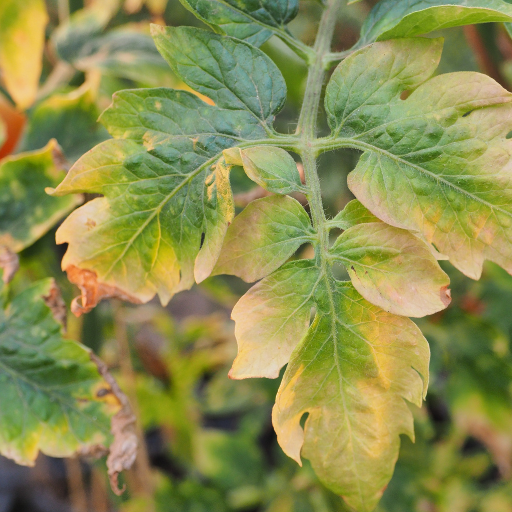
Typical problems in horticulture are usually linked with nutrient deficiencies, often magnesium and sulfur, which may have negative consequences on the health of plants. Epsom salts made out of magnesium sulfate constitute a viable source of magnesium that can remedy this problem. Plants showing symptoms of magnesium shortfalls, for example yellowing between leaf veins or blossom-end rot in tomatoes, greatly benefit from solutions of Epsom salts dissolved in water. In addition to this, it also boosts the ingestion of other essential nutrients, such as nitrogen and phosphorus, which facilitates growth vigor. Furthermore, its use during critical growth periods such as flowering and fruit development can enhance fruit quality and increase productivity. However, regular application following label instructions ensures sustained advantages since plants always have the necessary minerals to grow under different environmental conditions. Nevertheless, soil nutrient levels should be monitored because there is a risk of over-application, leading to nutrient imbalances.
Yellowing Leaves: Magnesium Deficiency Symptoms
Magnesium deficiency in plants is commonly identified by chlorosis or yellowing leaves. This condition develops through the gradual yellowing between the leaf veins, forming a contrasting edge surrounding green vascular tissues at the center portion. The leaves subsequently become brittle and necrotic in severe cases before falling off if left unattended to. Additionally, stunted growths could be one symptom while poor fruit development could be another; another symptom is increased vulnerability to infections due to insufficient magnesium. Gardens with insufficient amounts of the mineral may also exhibit reduced chlorophyll production, further inhibiting photosynthesis and lowering plant vigor. Treating such an occurrence effectively, therefore, calls for measures like Epsom salt applications so as to ensure that a sufficient amount of magnesium is available for uptake by plants during their growth cycle. Regular soil testing proves useful in maintaining optimal plant health.
Blossom End Rot: Can Epsom Salt Help Prevent It?
Blossom end rot (BER) is primarily caused by calcium deficiency in fruits, especially tomatoes and peppers. It results in dark depressions and sunken spots on the fruit’s bottom. Despite its reputation for treating certain nutrient deficiencies, such as Epsom salt, which contains magnesium sulfate, it does not provide a reliable solution to BER. Cell wall structure relies on calcium, and the lack of it is responsible for BER symptoms.
- Calcium Levels in Soil: The best soil calcium levels are between 1,000 ppm and 3,000 ppm; any more or less will affect fruit development.
- Soil pH: Ideally, pH ratios should be maintained at around 6.0-6.8 to allow better calcium absorption by plant roots.
- Watering Practices: Consistent watering with a recommended moisture level of 0.5 – 1 bar needs to be observed in the soil since fluctuation in moisture results in uneven uptake of calcium, contributing to BER.
In conclusion, though Epsom salts can help increase magnesium availability, they cannot replace essential lime or gypsum amendments if blossom-end rot is to be avoided entirely. Farmers should carry out regular soil testing for mineral content monitoring and other related activities to ensure good balance fertilization patterns.
Malnourished Growth: The Role of Epsom Salt in Encouraging Strong Development
Plants with stunted growth significantly impact agricultural productivity and often result from various nutrient deficiencies, including magnesium. Epson salt, composed of magnesium sulfate, is frequently recommended as a dietary supplement to foster healthy plant growth. Magnesium ions play a key role in producing chlorophylls, photosynthesis, and other plant metabolic processes.
A number of horticultural experts recommend applying Epsom salt to promote good growth rates and increased nutrient absorption especially when soil levels are low in this mineral. It has been found that when it’s used as either a foliar spray or soil drench it increases leaf greenness and vigor particularly on crops like tomatoes and pepper that are more vulnerable to lack of magnesium.
Nevertheless, it should be noted that the use of Epsom salt alone cannot bring about desirable results. A comprehensive approach towards nutrient management inclusive of proper soil testing and correct balance between important nutrients, mainly nitrogen, phosphorus, and magnesium, ensures optimum health for plants, thus avoiding stunting. Besides pH monitoring and water content in soils has to be done since these ensure high availability of nutrients so that the plants grow robustly.
Precautions and Potential Risks
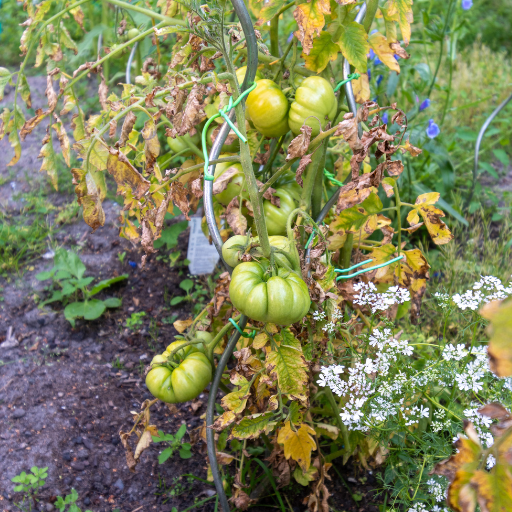
Some precautions must be taken to minimize potential risks when using Epsom salt as a plant growth promoter. Overuse can result in excessive magnesium levels in the soil, which can interfere with the uptake of other essential nutrients like calcium and potassium, leading to unbalanced nutrition that may harm plants. Also, it is important not to use Epsom salt to replace comprehensive soil testing; otherwise, one might end up applying unnecessary conditions that will not address what causes stunted plant growth.
Additionally, although Epsom salt is generally safe, some plants could exhibit adverse reactions if they come into contact with too much magnesium. It is, therefore, good practice to begin with low concentrations before scaling up applications based on plant responses. Environmental factors like moisture content and type of soil necessitate specific rather than general application of Epsom salts. Optimum support for the health status of plants calls for constant monitoring and adjustment guided by ongoing observation.
Overuse of Epsom Salt: Signs and Solutions
There are several visible symptoms of oversupplying Epsom salt in the field. Magnesium level imbalances may manifest in leaf yellowing, especially among old leaves. Too much magnesium disrupts calcium absorption resulting in physiological disorders exemplified by blossom end rot in tomatoes and peppers.
Necrosis occurring at the margins of leaves, particularly sensitive species, is another sign that too high magnesium levels are present, thus causing a stress reaction in this organism.
To address these issues, thorough soil testing is recommended to ascertain existing levels (Edit this part). Most crops thrive between pH 6.0 and 7.5 due to better nutrient absorption rates; however, maintaining a ratio ranging between 1:3 and 1:7 mg2+/Ca2+ has been found effective when growing most crops, hence optimal uptake all along (Plant nutrients).
When the plant shows signs of negative reactions to Epsom salt, a wide range of nutritional organic fertilizers should be prioritized. Periodic soil tests will enable informed adjustments and the provision of species-specific nutrients to the plants. Reducing Epsom salt application to once or twice per growing season can prevent accumulation but still allow for magnesium supplementation.
Interaction with Other Fertilizers: What to Avoid
Several critical factors must be evaluated when considering the interaction of Epsom salt (magnesium sulfate) with other fertilizers to prevent adverse effects on plant health.
- High-Calcium Fertilizers: Where there is excess calcium, magnesium should not be used together with high-calcium fertilizers such as calcium nitrate and lime, as this could hinder magnesium uptake by plants, resulting in deficiencies. According to soil test interpretation, most crops’ Mg: Ca ratio should ideally range from 1:3 to 1:7 to ensure optimum nutrient uptake. Soil tests revealing calcium levels exceeding 2000 ppm may necessitate reduced magnesium applications to maintain balance.
- Phosphorus-Rich Fertilizers: Using Epsom salt in combination with phosphorus-rich fertilizers may cause nutrient lockouts because the abundance of phosphorus can block access to some micronutrients, especially when combined with copper or iron fertilizers. Most crops should have a recommended phosphorous soil level of between 20 and 30 ppm, and exceeding this might necessitate adding magnesium for stress responses.
- Potassium Fertilizers: Adding Epsom salt to high potassium fertilizers like muriate of potash (potassium chloride) can make the condition of potassium-magnesium antagonism worse. This results from high levels of potassium preventing uptake of magnesium, thereby causing possible deficiencies. It is advisable to check soil potassium levels, which are generally considered optimum at around 100-200 ppm. Introducing Potassium at around 30-50% magnesium can improve this situation.
In all instances, it is critical to conduct thorough soil testing to establish nutrient levels and ratios before applying any fertilizer. This will provide a balanced nutrient profile supporting plant growth and health.
Environmental Considerations: Impact on Soil and Water
The environmental concerns pertaining soil and water quality are vital issues in agriculture. Over-application of these substances pollutes adjacent water bodies where nutrients leach into them during rainfalls, thus causing eutrophication. This process consumes oxygen in the water, leading to aquatic life death and disruption of local ecosystems’ natural balance. Furthermore, high concentrations of nitrates and phosphates in groundwater can pose health risks to humans and livestock. Best practices such as using controlled-release fertilizers, implementing buffer strips, and adopting precision agriculture techniques are recommended to mitigate these risks. These strategies promote more efficient nutrient use, reducing the likelihood of leaching and runoff while maintaining soil health and fertility. Regular soil testing also aids in tailoring fertilizer applications to crop needs thus minimizing environmental impact.
Enhancing Tomato Yield and Flavor with Epsom Salt
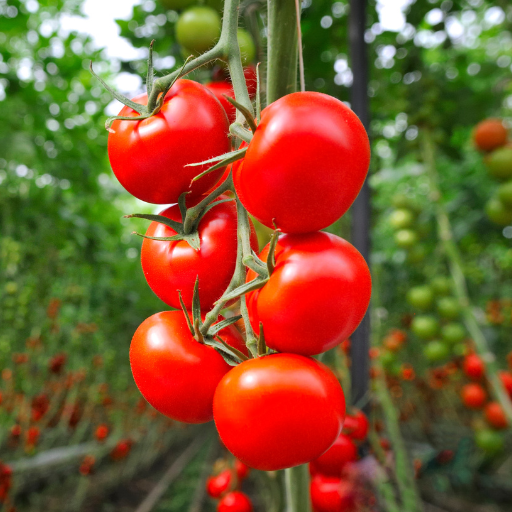
Chemically known as magnesium sulfate, Epsom salt is a major enhancer of tomato yield and flavor because it contains a lot of magnesium. Magnesium is an essential macronutrient in the process of photosynthesis by helping produce chlorophyll, which, in turn, improves tomato plants’ growth overall. During critical growth phases (usually planting and flowering stages), Epsom salts can be applied to increase fruit size and improve sweetness. Normal application can also help with nutrient deficiency-related conditions such as blossom-end rot which often results from inadequate levels calcium or magnesium In addition, regular use may help relieve issues connected with nutrient shortages like blossom-end rot that sometimes arises when there’s not enough calcium and magnesium To get maximum benefits from it, soil testing must always be comprehensive enough to ensure proper balance with other nutrients.
Boosting Fruit Production: The Science Behind It
Several scientific principles and agricultural practices can lead to increased fruit production. First, understanding plant genetics enables growers to choose high-performing varieties suited for local environmental conditions, boosting productivity and resilience. Secondly, maintaining optimum soil health through crop rotation, cover cropping, and incorporation of organic matter enhances the soil’s nutrient profile, resulting in healthier plants. Moreover, precision irrigation techniques, including drip irrigation, direct water to the root zone, reducing wastage while promoting efficient water usage. Fertilizing during critical growth stages enhances fruit set leading to higher yields. Lastly, integrated pest management (IPM) strategies are crucial for maintaining plant health; these practices help secure maximal fruit production by reducing pest pressure.
Improving Tomato Flavor: Myth or Reality?
The issue of improving tomato flavor has been controversial among gardeners and agricultural scientists. For example, some of the factors that influence the taste include genetics, growing conditions, and post-harvest handling methods involved in its preparation after harvest. Research shows that heirloom tomatoes are often favored due to their excellent flavors linked to their diverse genetic composition. Flavor compounds such as sugars and acids that are key for taste are affected by soil fertility, water availability and sunlight exposure during growth.
Another significant factor is the time of harvest where tomatoes picked when fully ripe tend to have a more pronounced flavor than those harvested before they mature. Post-harvest practices, including curing and storage conditions, also impact the final taste that consumers experience. For this reason, while improving tomato flavor is not entirely a myth it necessitates a nuanced comprehension of genetic selection as well as optimal agricultural practices to achieve desired outcomes.
Combining Epsom Salt with Other Organic Amendments
Soil health can be improved, and plant growth can be increased by combining Epsom salt with other organic amendments. This entails blending Epsom salts (mainly magnesium sulfate) with compost or well-rotted manure to enhance nutrient availability and improve soil structure. Moreover, it helps in nutrient uptake especially in crops like tomatoes and peppers that require higher amounts of magnesium. Additionally, mixing organic fertilizers with Epsom salts increases the overall nutrient profile while promoting rapid plant development in a balanced fertilization approach. Such amendments should be applied based on the results obtained from soil testing to prevent any imbalances in nutrients leading to optimum plant performance.
Reference sources
-
National Garden Bureau
- Source: National Garden Bureau
- Summary: Dilute Epsom salt at a rate of 2 tablespoons per gallon of water. This solution can be applied as a drench to the roots or sprayed onto the plant foliage to help tomato plants.
-
Giant Veggie Gardener
- Source: Giant Veggie Gardener
- Summary: Dilute 1 tablespoon of Epsom salts with one gallon of water and apply as a foliar spray. This method allows Epsom salts to be quickly absorbed by tomato plants.
-
Better Homes & Gardens
- Source: Better Homes & Gardens
- Summary: Epsom salt is recommended as a fertilizer for planting, in a foliar spray to correct yellowing leaves, and to prevent or correct blossom end rot in tomato plants.
Frequently Asked Questions (FAQs)
Q: What is Epsom salt, and why is it beneficial for tomato plants?
A: Epsom salt is magnesium sulfate, a mineral compound that provides essential nutrients, particularly magnesium, which is crucial for photosynthesis and overall plant health.
Q: How often should I apply Epsom salt to my tomato plants?
A: It’s recommended to apply Epsom salt every 2-4 weeks during the growing season. However, the frequency can vary based on your soil’s magnesium levels and the plant’s specific needs.
Q: Can I use Epsom salt for all types of tomato plants?
A: Yes, Epsom salt can be used for all tomato varieties, including heirloom, cherry, and Roma tomatoes, as it helps address common nutrient deficiencies.
Q: What is the best method to apply Epsom salt to tomato plants?
A: The most effective methods include a foliar spray, soil drench, or side-dressing, depending on your specific gardening needs and plant health.
Q: Can overuse of Epsom salt harm my tomato plants?
A: Yes, excessive use of Epsom salt can lead to nutrient imbalances, affecting plant growth and soil health. It’s essential to follow recommended guidelines.
Q: Does Epsom salt prevent blossom end rot in tomato plants?
A: While Epsom salt provides magnesium, blossom end rot is usually caused by calcium deficiency. Epsom salt may help overall plant health but won’t directly prevent this issue.
Q: Is Epsom salt safe to use in organic gardening?
A: Yes, Epsom salt is safe for organic gardening as it is a natural mineral compound and does not contain synthetic chemicals.
Q: Can I mix Epsom salt with other fertilizers?
A: Epsom salt can be used alongside other fertilizers, but it’s important to avoid over-fertilization and to monitor soil nutrient levels to prevent imbalances.
Q: How can I tell if my tomato plants need Epsom salt?
A: Signs of magnesium deficiency, such as yellowing leaves with green veins, stunted growth, and poor fruit development, may indicate the need for Epsom salt.
Q: Will Epsom salt improve the flavor of my tomatoes?
A: Some gardeners believe that Epsom salt can enhance the flavor of tomatoes by improving the plant’s overall health, though scientific evidence on this claim is limited.






